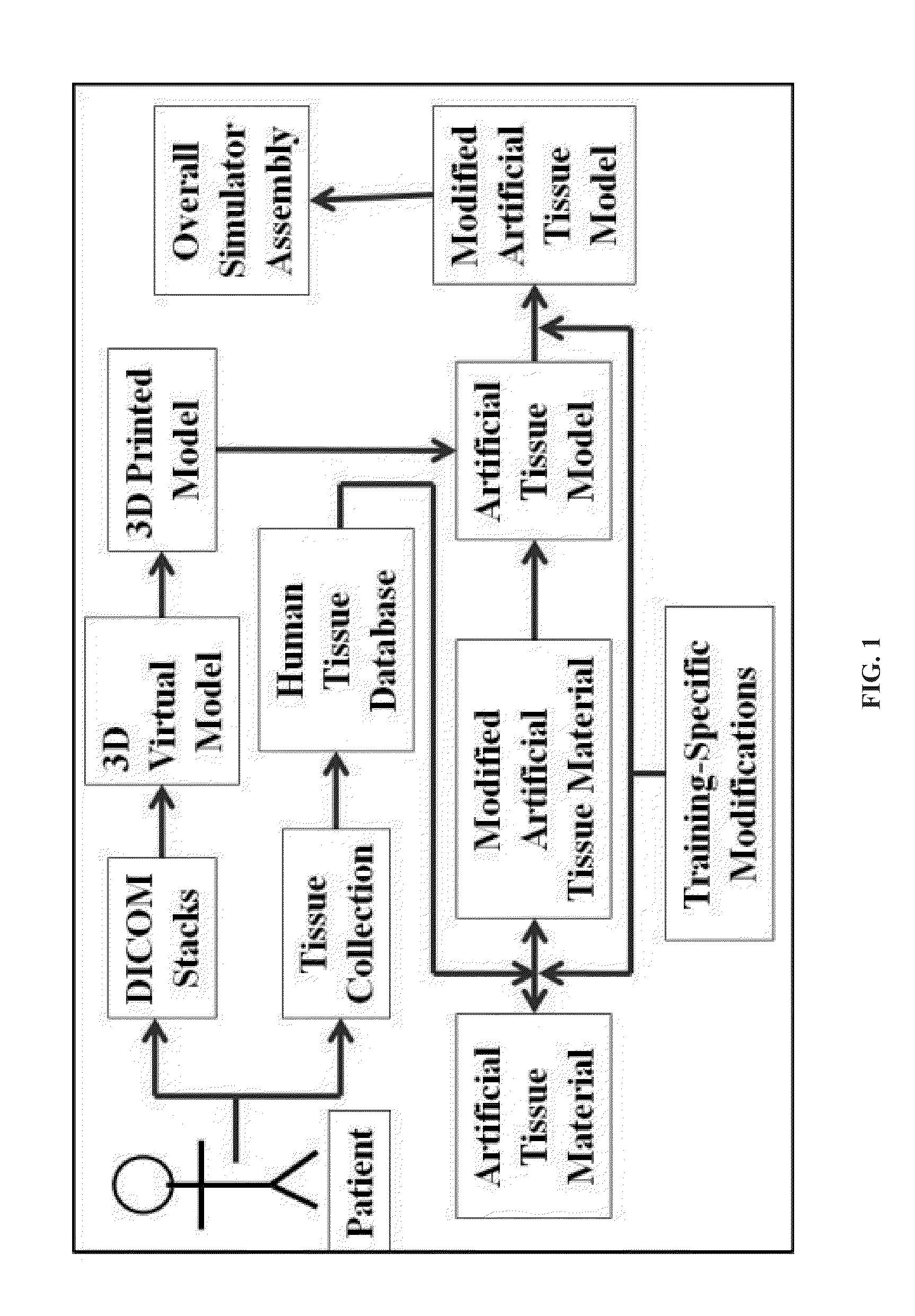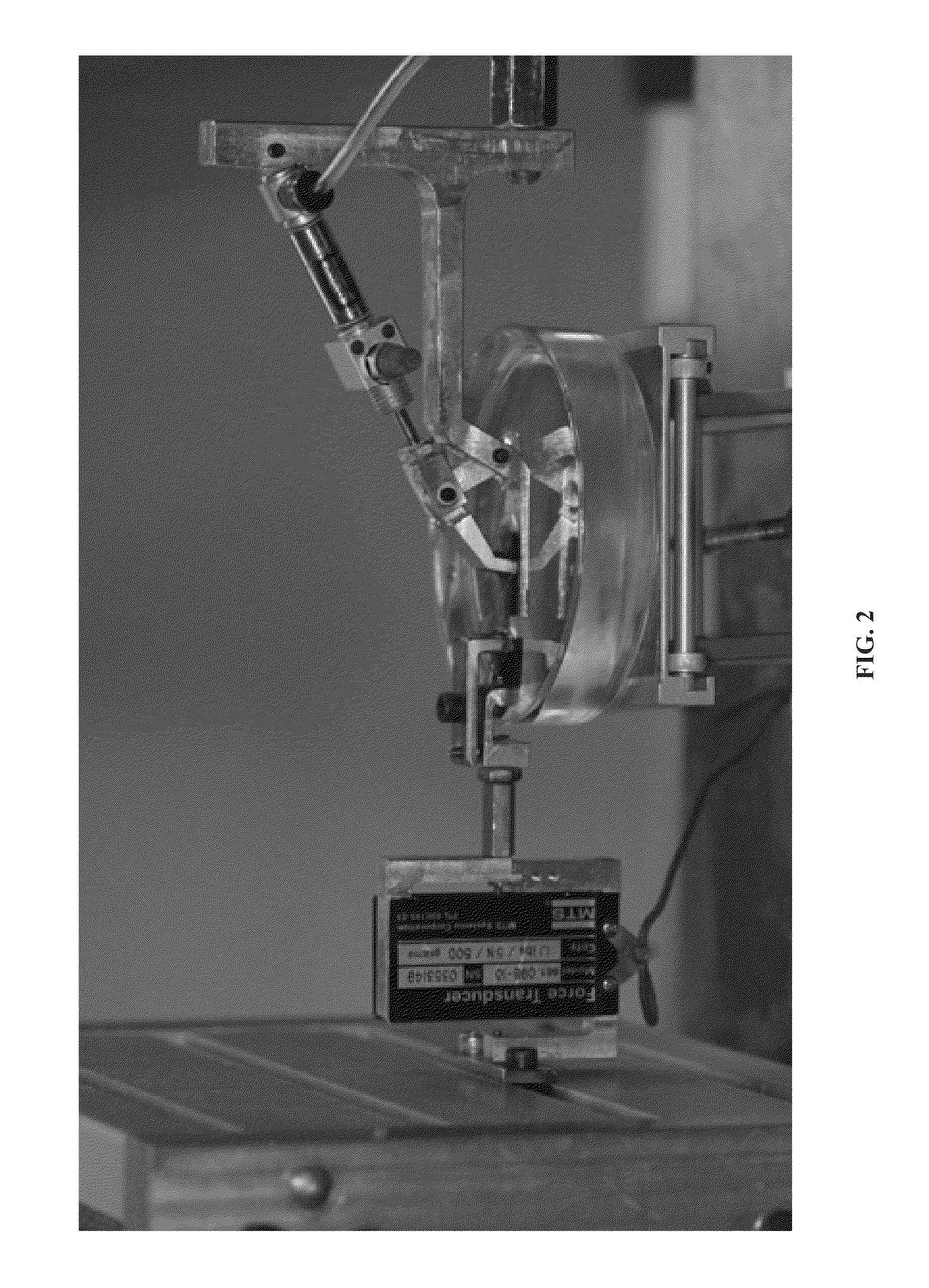Simulated, representative high-fidelity organosilicate tissue models
a tissue model and organosilicate technology, applied in the field of tissues simulation, can solve the problems of high cost, difficult to obtain and store, and difficulty in obtaining and storing in sufficient quantities for medical training
- Summary
- Abstract
- Description
- Claims
- Application Information
AI Technical Summary
Benefits of technology
Problems solved by technology
Method used
Image
Examples
example 1
Renal Artery Simulator
[0093]Using an organo silicate base material, the successful creation of an artificial tissue training model has been created for a human renal artery (FIG. 7) in order to meet the specifications of the American Urological Association for laparoscopic and robotic clip applying (Syverson, et al., 2011). The simulator tissue was color mapped to mimic human renal artery and filled with artificial blood to a mean arterial pressure (MAP) of 80±2 mmHG. Solid black pigment lines and dotted black pigment lines were added for training purposes to indicate areas for clipping and cutting respectively. The model was fitted into a mechanical apparatus to mimic a beating motion.
example 2
Kidney Simulator
[0094]A kidney simulator (FIG. 8) was also developed using the techniques described above. The simulator utilizes renal tissue properties, e.g., from a human tissue database, accurate human anatomical modeling (stereolithographic prototyping) and color mapping to create realistic internal features such as the endoluminal ureter and the calyceal kidney collecting system. The model can be used in combination with artificial kidney stones and fluid to simulate procedures such as a ureteroscopy (FIG. 9), retrograde pyelography, ureteral stent placement, nephro-lithotomy, laser and extracorporeal lithotripsy and kidney stone extraction.
[0095]In conclusion, the overall method for developing artificial tissue simulators for training purposes provides accurate anatomical modeling and matching of tissue properties. The materials and fabrication techniques are cost-effective and allow for the integration of indicators to properly evaluate trainee skill acquisition. The resulti...
PUM
 Login to View More
Login to View More Abstract
Description
Claims
Application Information
 Login to View More
Login to View More - R&D
- Intellectual Property
- Life Sciences
- Materials
- Tech Scout
- Unparalleled Data Quality
- Higher Quality Content
- 60% Fewer Hallucinations
Browse by: Latest US Patents, China's latest patents, Technical Efficacy Thesaurus, Application Domain, Technology Topic, Popular Technical Reports.
© 2025 PatSnap. All rights reserved.Legal|Privacy policy|Modern Slavery Act Transparency Statement|Sitemap|About US| Contact US: help@patsnap.com



